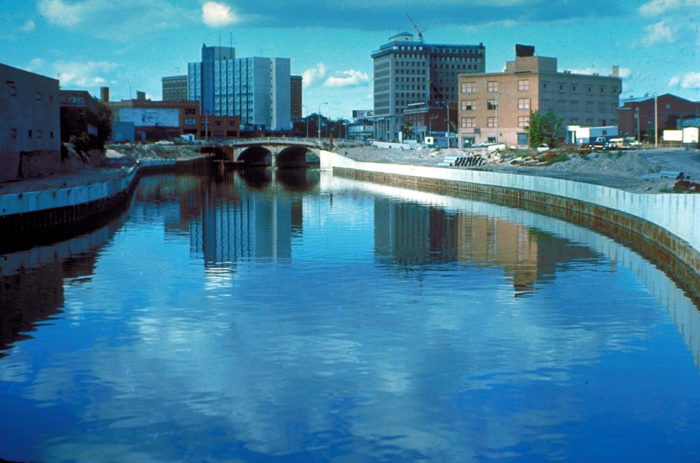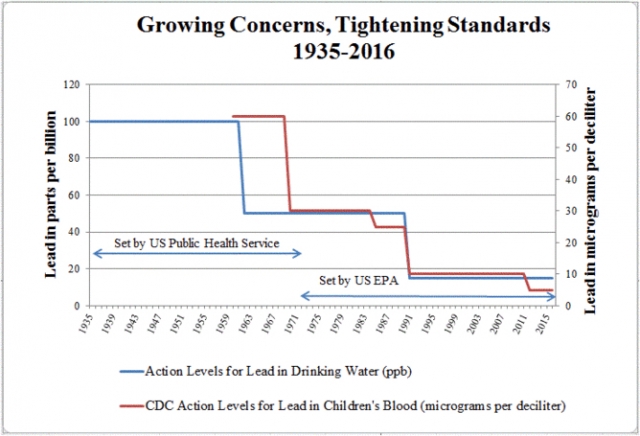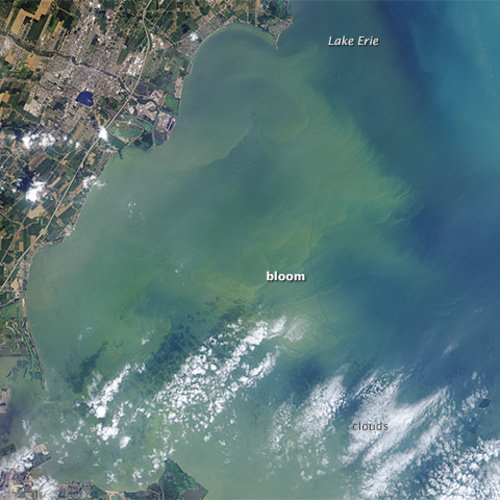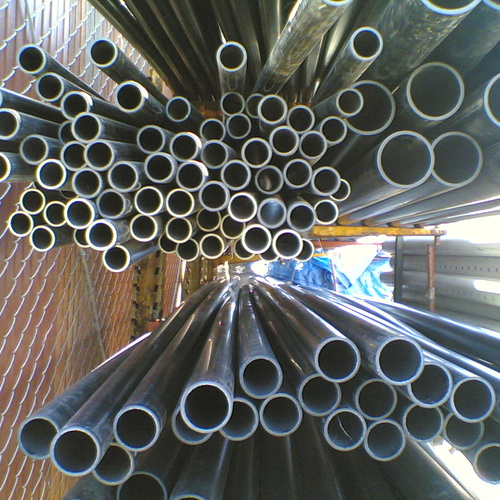
Image Credit: U.S. Army Corps of Engineers
As the crisis over the water in Flint, Michigan, rolls on, we’re learning more and more about the irresponsibility and callousness of officials and politicians in charge.
The mix of austerity politics, environmental racism, and sheer ineptitude makes for a shocking brew, yet the physical conditions that have made it literally toxic for Flint residents are neither as exceptional nor as recent as much of the media coverage suggests.
Long before that fateful decision two years ago to turn to the Flint River for the city’s drinking water, pipes made of lead had threaded throughout the city’s underbelly. Flint shares this historical legacy with thousands of other cities, suburbs, and towns across our country, and most likely this is not the first time, even in Flint, that these pipes have conveyed tiny amounts of the toxin into homes and children.
Over the past few decades, our environmental laws and agencies have met with much success in curbing some of Americans’ exposure to lead, a damaging neurotoxin. Yet they have struggled to contain this continuing danger precisely because it is literally built into our water systems.
Given that lead has been known as a poison for centuries, why did our forebears in the 19th and early 20th centuries rely on it to carry so vital a fare as drinking water? The answer to this question explains why there are many more Flints waiting to happen.
Lead was a lesser evil
In the 19th and early 20th centuries, from an engineering standpoint, lead seemed superior to concrete or iron, the alternatives at the time when many municipal water systems were being built. Lead is more malleable and thus easier to bend around corners. It also lasts longer.
Doctors offered virtually no resistance to this decision. After all, they themselves were turning to lead to treat diarrhea or trigger abortions. They recognized only those symptoms of lead poisoning that by today’s standards seem extreme: the severe stomach aches, muscle weakness, kidney failure, seizures, and even death that can ensue when lead in the blood rises past 60 micrograms per deciliter – 12 times the current standard.
While lead pipes did occasionally produce “epidemics” this dramatic, health officials remained far more worried about diseases like typhoid, which they knew piped-in water could prevent. As a result, as much as half of the water pipes laid in America’s burgeoning metropolitan areas during the early 20th century were made of lead.
It is also worth noting that lead pipe made up a relatively minor portion of the burgeoning flow of this toxic metal into early 20th-century factories, homes (through paint pigments), and automobiles (through leaded gasoline).
Spurring it along, the lead industry grew rich and powerful. In the time before the advent of the Centers for Disease Control and Prevention (CDC) or the Environmental Protection Agency (EPA), it sponsored its own health research. Some investigators even advanced a thesis that levels of lead in the blood and environment that, in retrospect, seem quite high, were “normal,” a not-so-worrisome condition of modern life.
In fact, the health and behavioral effects of lead from the early to the mid-20th century, as suggested by recent extrapolations from our current knowledge, were likely enormous. It’s estimated that leaded pipe alone increased infant mortality by as much as 30 percent in some cities, and led to as much as a 25 percent rise in homicides.
Federal laws have grown tighter
That we have come to know so much more about what lead can do is thus an important part of the story unfolding in Flint.
As investigators of lead’s effects gained greater funding and independence and honed their methods, our understanding of its subtler and longer-term effects grew.
Research on children has shown behavioral disorders, learning difficulties, and lowered IQs turning up at blood and environmental levels far below what was earlier thought safe. Over the past 30 years, the CDC’s recommended blood levels for lead in the young have dropped precipitously, with no level now acknowledged as really safe.

With greater knowledge of lead’s damaging effects, a concerted campaign against lead started in the 1970s. A ban on its usage in paint in 1978 and a phase-out from gasoline into the 1980s have had considerable impacts.
A 1974 law to control lead in drinking water had less success, however, because it focused on what got pumped into pipes rather than what showed up in people’s faucets.
After an EPA study in 1986 showed that one in five of the nation’s drinking water systems carried more lead than is considered safe, Congress passed a new Clean Water Drinking Act the same year. This law is still the basis for our current efforts to control the lead that can leach from our water pipes.
Michigan Republican politicians, including Governor Rick Synder, have borne much blame for the Flint crisis – and some of them continue to invite more. But their party was instrumental in the genesis of this act.
It was Ronald Reagan who signed the bill that finally banned the use of leaded pipe and high-lead soldering. And it was George H. W. Bush’s EPA that implemented it, through a 1991 Lead and Copper Rule that required “high-risk residences” to be monitored, with further measures if 10% of households exceeded unsafe lead levels of 15 parts per billion (ppb) in their tap water.
Dropping anti-leaching agents
The Clean Water Drinking Act, along with environmental and health officials, did encourage gradual replacement of lead pipes with nontoxic materials such as PVC. But municipalities mainly turned to a chemical fix to lower lead levels, namely anti-leaching agents. Cheaper and faster-acting, these substances could largely prevent lead from entering the water from pipes and solder, and could be used to reduce risks when the source of drinking water changed.
The lead poisoning in Flint recalls a similar water emergency from the early 2000s in Washington, D.C. That emergency highlighted the risks of relying on anti-leaching chemicals.
That crisis began in 2001 when the District of Columbia Water and Sewer Authority (WASA) rather suddenly discovered lead levels in its testing that exceeded EPA’s action level.
Events moved even more slowly than in Flint, hitting the headlines only in 2004. Yet the dynamic was similar: those in charge sought to downplay or even suppress what the water testing showed.
The fact was, however, that by 2003 the dimensions of the crisis had become unmistakable. Nearly two-thirds of the water sampled (in “high-risk” homes) exceeded the action level – this in a water system of a half million customers, far bigger than Flint’s.
As with Flint, reports from some homes ranged much higher, upwards of thousands of parts of lead per billion, surpassing levels in wastes deemed officially “hazardous.”
In Washington, D.C., as in Flint, excess lead in faucets owed much to a decision to abandon anti-leaching agents. The decision in D.C. was made by the Army Corps of Engineers, whose aqueduct furnished the water for WASA. Cost was part of their rationale, but apparently less so than in Flint; they and the EPA officials who vetted their decision were more worried about high levels of bacteria. What then drew out the lead from existing pipes was a new set of disinfectants also applied by the Army Corps, called chloramines, which had a powerful leaching effect on the lead in the system’s old pipes and joints.
Spotty monitoring
There’s been one big difference between D.C.’s leaded water crisis and that of Flint: the speed and certainty with which the effects have been documented in the blood of water drinkers.
In Washington, an early CDC study failed to find any link between leaded water and blood lead levels. It was only after the crisis was over that a Congressional investigation found the agency to have withheld some critical results. A further study connected D.C.’s water crisis to higher rates of miscarriages and fetal deaths.
In Flint, by contrast, a peer-reviewed study published just last year in the American Journal of Public Health demonstrated a clear and unequivocal connection between lead levels in the water and those in people’s blood.
What both these experiences make clear is just how risky it has become to rely on monitoring that remains spotty and on chemical treatments, which can be easily abandoned.
We’d now do well to consider the ultimate cause of this type of lead poisoning: the built-in legacy of America’s last leaded century, those old, ever-dangerous conduits by which so many of us still get our drinking water.
Currently, their replacement happens only sporadically, in the wake of crises — if then.
From 2003, the Washington, D.C. government has spent millions digging out and replacing its toxic piping. The mayor of Flint has called for a similar project there, yet so far, promises of support have failed to materialize.
An estimated three to six million miles of lead pipes across our country still carry water, and most all of them are vulnerable to similar dangers, whether at the hands of short-sighted and prejudicial bureaucrats or politicians whose ideology or opportunism leads them to blithely dismiss well-established science.
The best solution would be to replace our lead lines systematically and proactively, not just one crisis-beset city at a time. Until we do so, it’s a safe bet that more Flints lie on our horizon.
Chris Sellers is a professor of history at Stony Brook University. This post originally appeared at The Conversation.
Contractors Guide to Lead Paint Regulations.pdf
Weekly Newsletter
Get building science and energy efficiency advice, plus special offers, in your inbox.















5 Comments
One bright side
At least some good will likely come of this - drawing far more attention to, and public support for, lead service line replacement programs.
Madison, WI went to lengths to voluntarily replace all lead service lines in the city, both public and private, entirely eliminating them in 2012, both avoiding the environmental impact of treating the water and achieving a greater level of safety. Few other cities have performed voluntary replacements at all, and those that are forced to by the Lead and Copper Rule only replace the public portion of service laterals, with low compliance on replacement of the private portion. I hope that the public attention Flint has brought to bear will convince others to follow in Madison's footsteps and eliminate their lead service lines as well.
@Tim
Agreed. The problem in Flint was a long time coming and while the actions of the State of Michigan can be deemed as the straw which broke the camels back, it doesn't let previous city administrators off the hook who effectively ran the city into the ground and bankruptcy to begin with.
Reply to Chris M
Chris it seems to me you are taking very wrong lessons from this article and trying to divert attention from what really happened in Flint, ie. the politics behind what happened. No one ever said, nor have they implied that there hasn't been incompetence going on in Michigan and specifically in Flint during previous administrations. But incompetence is completely different from malevolence and a power grab. That basically was what happened when conservative government officials used the economic crisis in Flint to stop public input to selecting their officials and grabbed the reins of power there. It was a republican government coup in everything but name.
It you need to understand what was happening all you need to understand is a thing called disaster capitalism. It happens when a natural or a human caused disaster is used as an excuse for a few individuals, mostly conservative republicans, to grab power from the normal election cycle and impose new rules that are not voted on by the people affected. It works when people's emotions are stirred up by those disasters and the normal rational decision making processes are disrupted.
The white Republican officials in Flint swooped in after the economic collapse and grabbed power. Chris, I think you at some point will need to accept that there is a big difference in public policy when it is motivated by mere incompetence, and when it is caused by malevolence, prejudice, and avarice.
@Eric
Flint began its long slow decline in the early 1980's. These city services problems don't happen overnight and frankly the town probably should have been dissolved and it's inhabitants incorporated onto county services years ago. There's no shame in that. IIRC Detroit for example is considering a move to reduce the size of their footprint which is probably a smart decision.
FWIW: Atlanta, GA had been faced with a pending water crisis (Sewage/Storm water mgmt.) that had been ignored for too long. White and Black city administrators along with Governor's from both political parties chose a policy of kicking the proverbial can down the road. Finally a mayor (Shirley Franklin) took control of the situation before it rose to crisis levels. IIRC it took a few billion dollars in bonds to pay for it but the city is in a better place for the future.
To Chris
So Chris,
Sorry for the delay in returning a reply to your last comment. I just couldn't believe that I was reading you correctly so I figured the best response was to wait and try to think if I was reading something into your reply that wasn't there. After much thought I've decided my first interpretation of your reply was more or less right.
No one ever said that lead pipes were not dangerous. But there are probably hundreds of towns throughout this country that have them because they were installed when their danger was unknown. You have totally ignored what the article said: and also my reply to your comment. That danger can be ameliorated by not doing things that leach the lead out of the pipes. Hundreds of towns with lead in their pipes are very careful about that. My understanding is Washington D.C. caused their problem of lead leaching out of the pipes through a mistake in groping with another water borne health problem.
A dangerous, but at least honest mistake.
I think Flint is another case entirely. I think it was borne of pure racism. It is now known that numerous government officials told the governor of Michigan that he should not use the Flint river for its water because of this danger of lead leaching out. He ignored them. This was not a problem caused by ignorance. It was caused by racism. If you cannot see that then I think it says much more about you than about the facts of the situation. But I guess the city is in a "better place for the future" now that hundreds or thousands of people have been lead poisoned needlessly.
Unfortunately I do not need to say any more about where I think your motivation for writing what you did comes from.
Log in or create an account to post a comment.
Sign up Log in